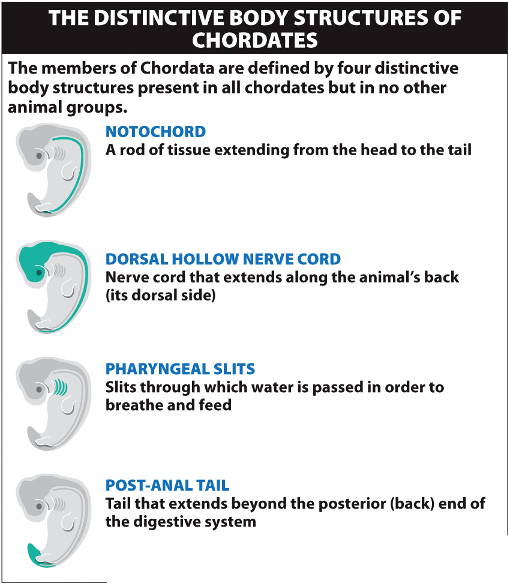 Chordates are a clade
that possess:
Chordates are a clade
that possess:
- a rigid but flexible notochord
- dorsal hollow nerve cord
- pharyngeal slits or gill pouches
- post-anal tail
Most chordates possess vertebrae;
these vertebrates include fishes, amphibians, reptiles (including birds), and mammals.
Note that no animal other than chordates can possess any of these traits such as a
post-anal tail.

 Animal diversification
Animal diversification 
 Animal diversification
Animal diversification 